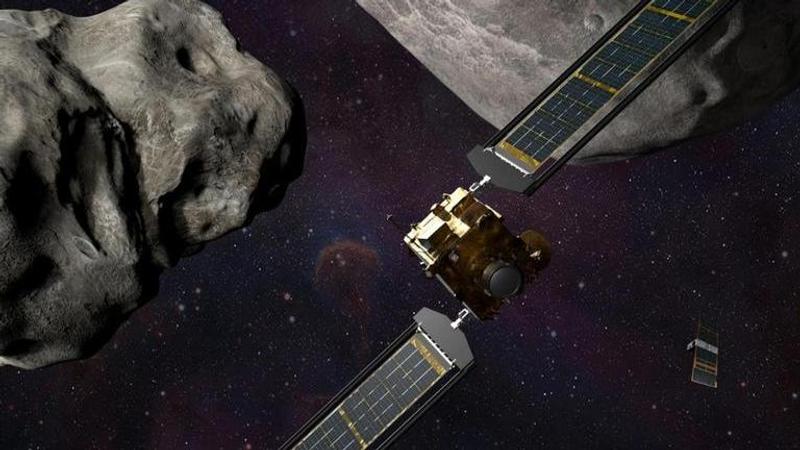Published 17:44 IST, August 14th 2022
NASA's DART spacecraft to collide with asteroid on Sept 26; event to be aired live
NASA launched its DART mission on November 21 last year toward a binary asteroid system to test a defence technology that could save Earth from asteroids.

The day is nearing when NASA's spacecraft will intentionally ram into an asteroid to test a defense system for our planet. Named Double Asteroid Redirection Test (DART), the spacecraft will collide with the space rock on September 26. NASA says that the event will be aired live on its website, however, the timing of the event has not been disclosed yet.
What is NASA's DART mission?
The mission was launched on November 21 last year with the aim to slam a spacecraft into an asteroid. The target asteroid is actually part of a binary system and is named Dimorphous. Having a diameter of 160 meter or 530 feet, this asteroid orbits a bigger asteroid Didymos (diameter of 780 meter or 2,560 feet). On September 26, the DART spacecraft will crash into Dimorphous, located 109.4 crore kilometres, at a speed of 23,760 kph to change the asteroid's motion.
Notably, this is the first-ever mission dedicated to testing the technology to deflect an asteroid's path through kinetic impact. "The spacecraft will deliberately collide with a target asteroid—which poses no threat to Earth—to change its speed and path. If successful, DART’s kinetic impact method could be used in the future if a hazardous asteroid on a collision course with Earth were ever discovered", NASA said in a statement.
What happens after the impact?
The target asteroid is expected to be much more severely damaged than expected considering the post-impact shock waves and the cratering process along with the fact the Dimorphos has a loose core. After the impact, the European Space Agency's (ESA) Hera mission will come into play. The HERA spacecraft will rendezvous with the asteroid system to examine the aftermath of the collision and will perform a close-up crash scene investigation by sending out two CubeSats.
These CubeSats named Milani, the rock decoder and Juventas, the radar visionary, will carry out closeup investigations. Interestingly, the HERA spacecraft will also send visuals of the collisions since DART's camera would be destroyed in the collision.
Updated 17:44 IST, August 14th 2022



